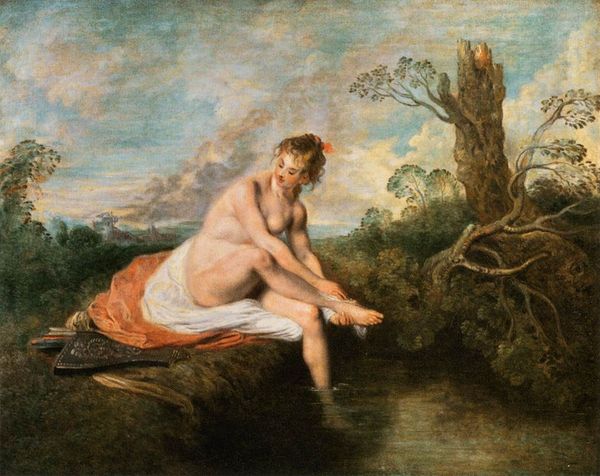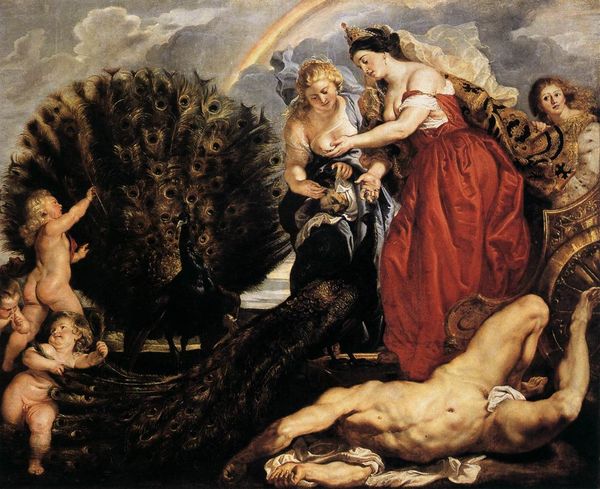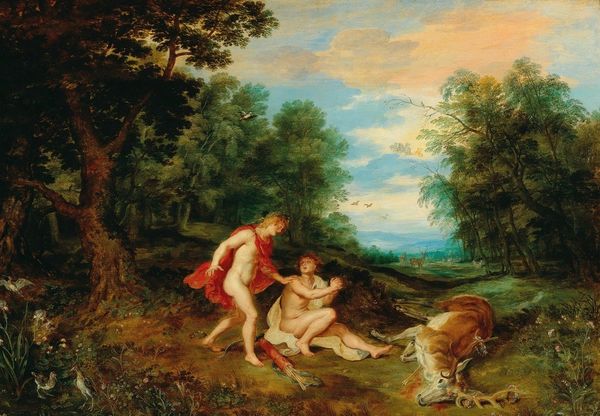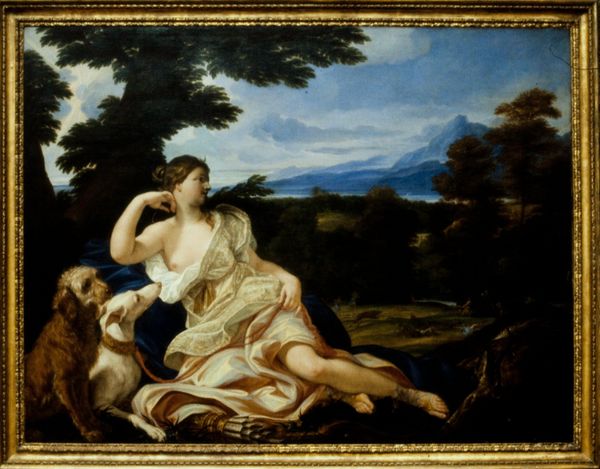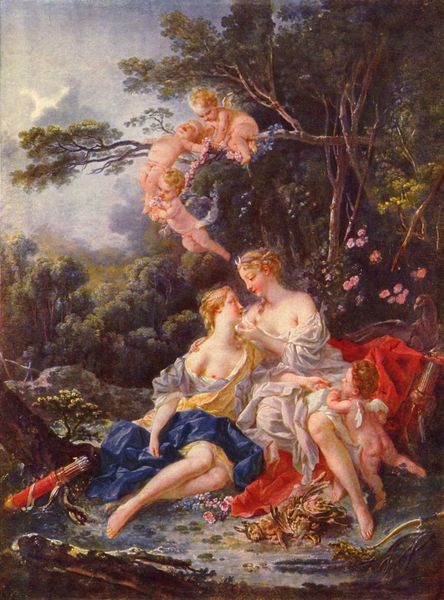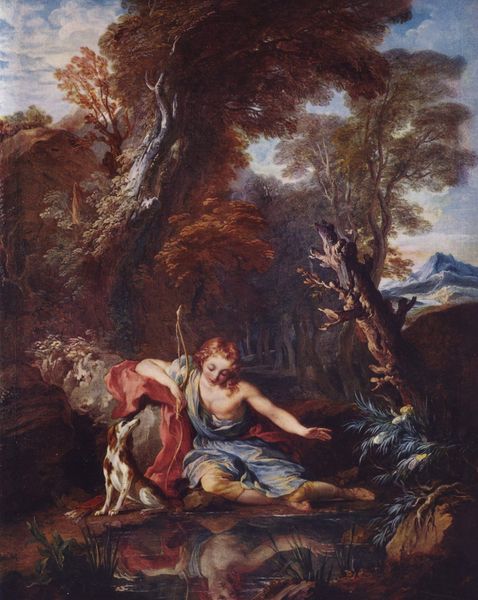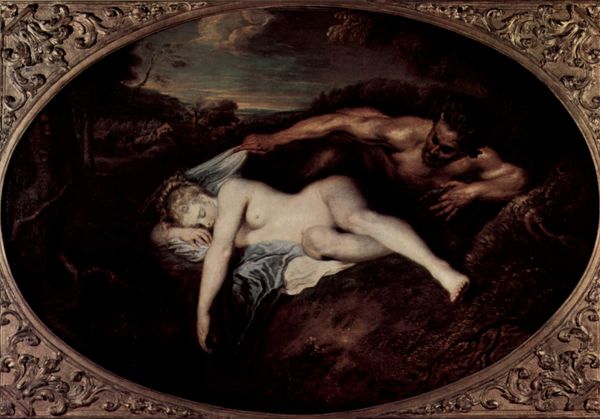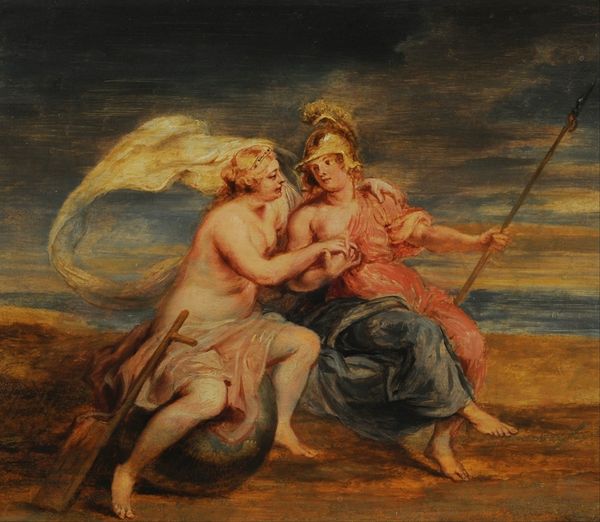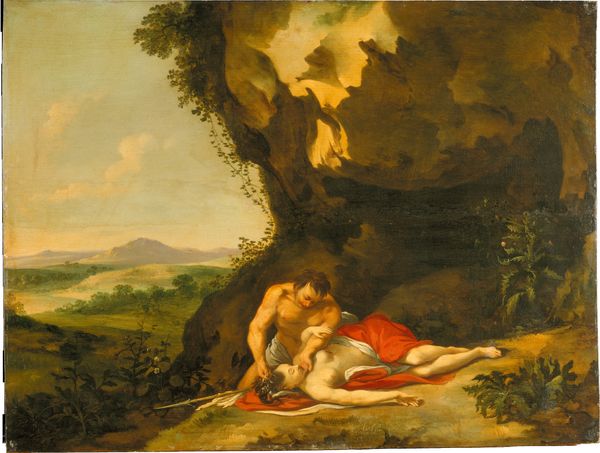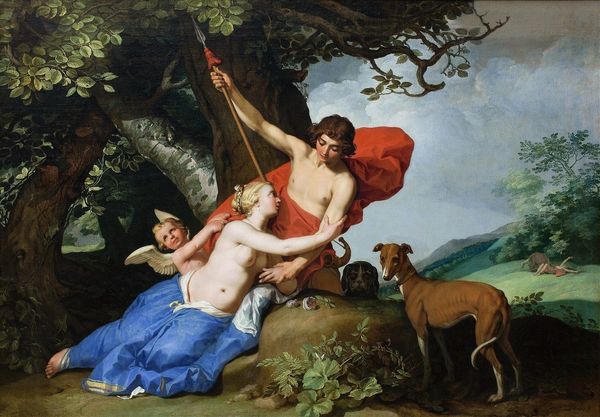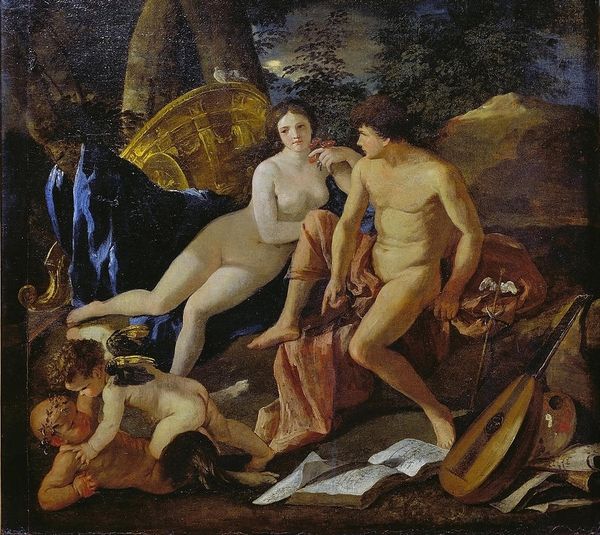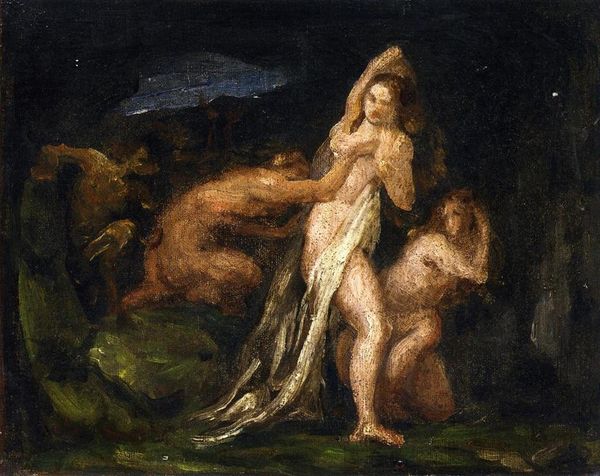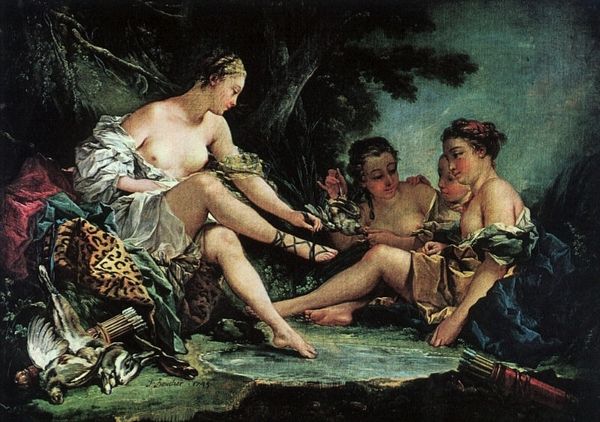
painting, oil-paint
#
portrait
#
allegory
#
baroque
#
painting
#
oil-paint
#
fictional-character
#
landscape
#
figuration
#
oil painting
#
roman-mythology
#
cupid
#
mythology
#
history-painting
#
lady
#
nude
#
portrait art
Dimensions: 199.4 x 191.8 cm
Copyright: Public domain
Editor: Here we have van Dyck’s "Cupid and Psyche," created around 1640 using oil paint. It’s such a peaceful scene, and the landscape setting really softens what could be quite a dramatic moment in the myth. What can you tell me about this piece from your perspective? Curator: Looking at this piece through a materialist lens, it’s interesting to consider the conditions under which van Dyck was working. Commissioned art of this scale in the 17th century implies significant wealth and access to resources. What kind of labor went into producing the pigments for these vibrant colours? The lapis lazuli for the blues, for example, was incredibly expensive and came from very far away. How does the material wealth required for this work shape its meaning? Editor: That's a great point; I hadn't considered the value tied up in the materials themselves. How does that intersect with the subject matter, though? Curator: The depiction of idealized figures in a classical narrative is itself a form of consumption, isn't it? The patrons are buying into a legacy, a connection to the intellectual and aesthetic values of antiquity. This work isn’t just about love or beauty, it’s about power and display. It uses the very materials that comprise its creation as well as its means for production to signal class. Think about who would’ve had access to see it – who was included and excluded from this story based on class and social standing. Editor: That really makes me rethink the idyllic scene. It's less about a timeless myth and more about a specific moment in history, highlighting class distinctions through the acquisition and display of art. Curator: Precisely. And the skill of the artist, displayed in the rendering of fabric and flesh, becomes another commodity. Editor: I see the painting in a completely new way now! It’s amazing how focusing on the materials and context shifts the entire meaning.
Comments
No comments
Be the first to comment and join the conversation on the ultimate creative platform.
